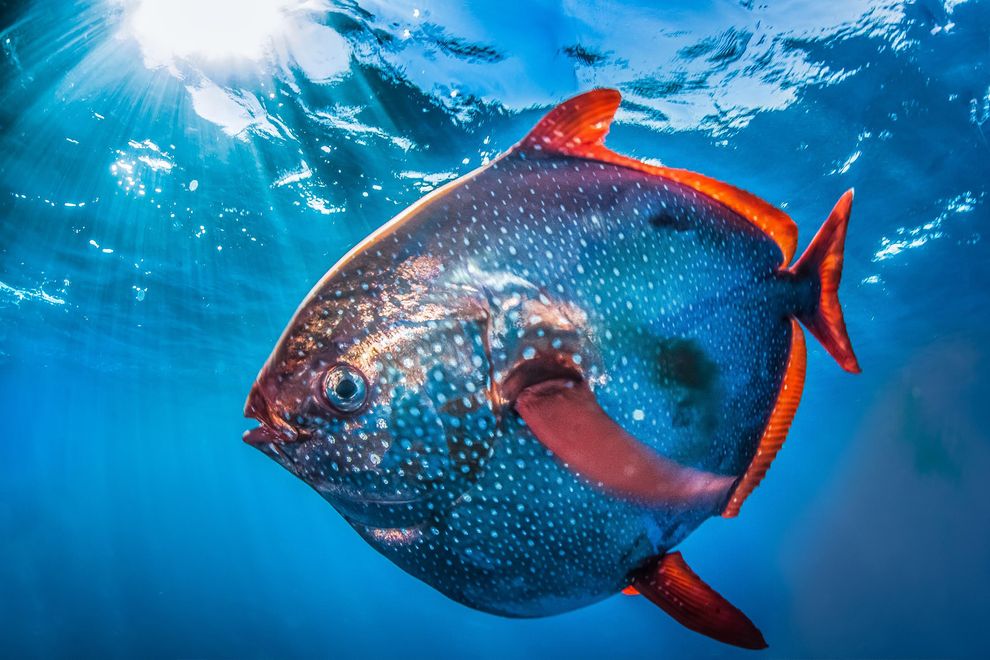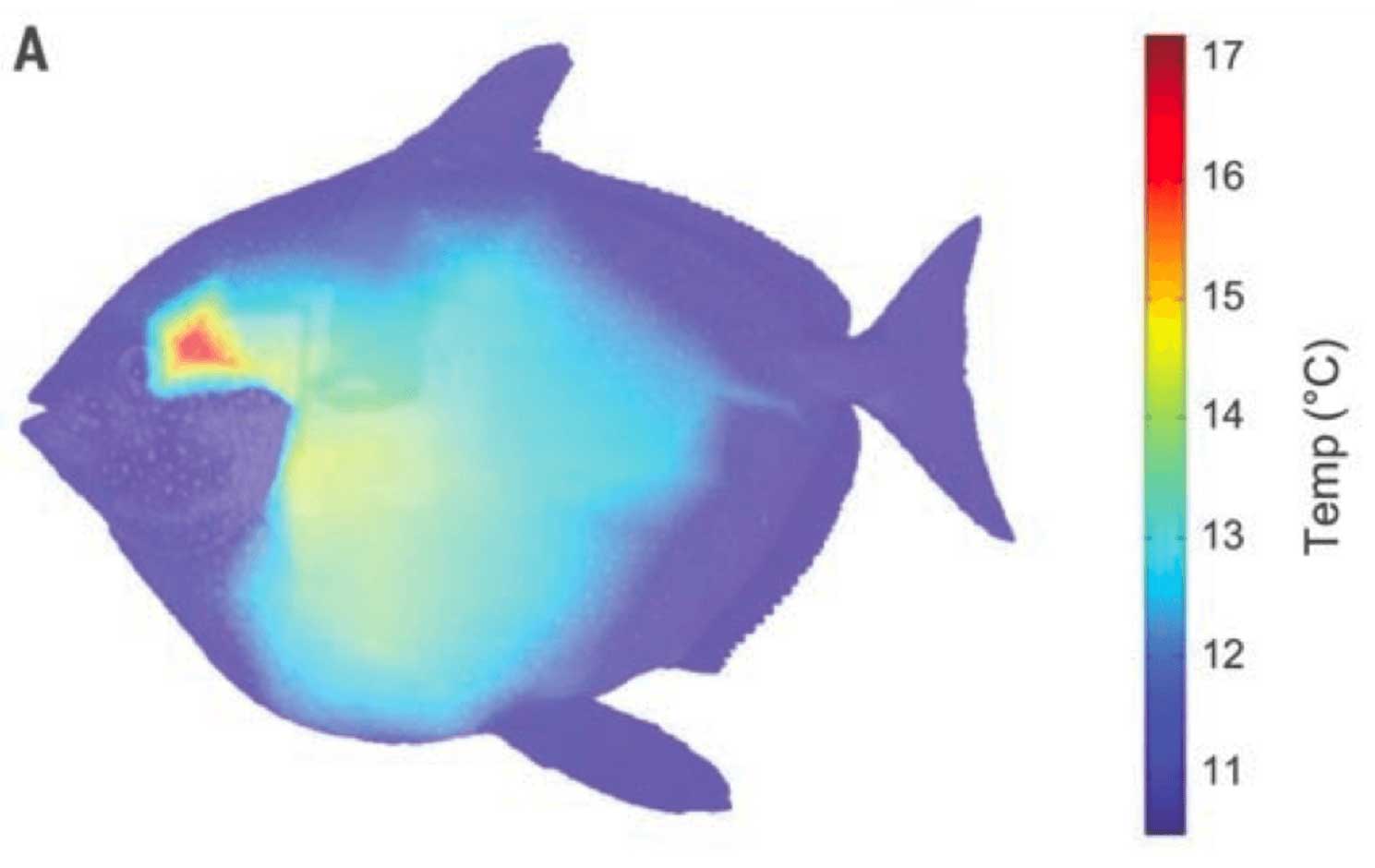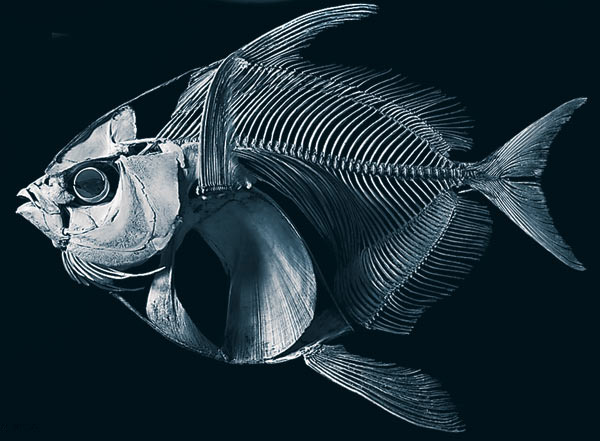
According to popular belief, only mammals and birds are warm-blooded – are able to maintain a constant body temperature. But now scientists from the National Oceanic and Atmospheric Administration research in the United States have identified a new, unexpected candidate: Moonfish. The discovery represents the first and only known case of a warm-blooded fish.
Opah, also known as Moonfish, is a large, predatory fish with oval form, which inhabits the deep ocean waters. Its unusual shape can fool you that it’s not a very good swimmer, but actually it is extremely fast and can compete with record breakers such as tuna and swordfish. These, however, have the need to regulate their internal body temperature as warm swim in the cold waters and vice versa, while the Moonfish could swim in the freezing deep.
Exactly how the Moonfish manages to keep its temperature in cold waters that has long perplexed scientists. Simple marine animals in cold waters are quite slow and immobile to conserve body heat.
Before it was thought that Moonfish is slow, just like most others at this depth. But because it can maintain its body temperature actually turns out to be quite an active predator, capable of chasing down prey such as sepia and migrate over great distances.

Scientists first suspected something amiss when they started to study the gills of the fish. They found that some blood vessels there – those that carry warm blood through the body – are wrapped around blood vessels, carrying cold blood from the gills. This heat exchange system recycles heat generated by the movement of the fish.
As a result of this amazing evolution, Moonfish can maintain body temperature alone. This is quite different from the processes that allow some fish, such as sharks, temporarily to warm the parts of their body in motion. Opah can support higher body temperature, even around their internal organs. Capable to keep their eyes and brain with 2 ° C warmer than the rest of the body – a phenomenon which is found in some sharks, marlin and tuna. This allows the eye and the brain to function normally in deep dives in waters with a temperature below 4 ° C. Generally maintain a constant body temperature by 5 ° C higher than their environment.

Although Moonfish increasingly falls into the nets of fishermen and is becoming a popular dish in restaurants – especially in Hawaii – very little is known about her habits. No official data about the size of her population, although some scholars to suspect that is actually growing, probably due to the overfishing of tuna and other fish, which are competition for prey.
It is believed that it spends its entire life in the deep ocean, at a depth of between 50 and 500 m. Leads a seemingly monastic way of life, but fish of species are seen and together with Tunas, mackerel and herring.
Those who order the restaurant Moonfish must be careful, however. It contains very high concentrations of mercury, but it is also known that the fish carry also tropical marine toxin that causes ciguatera – a serious disease for which there is no cure.


























